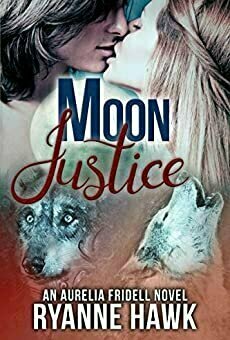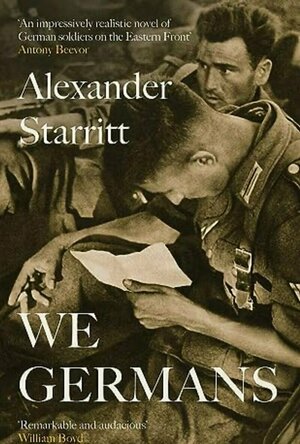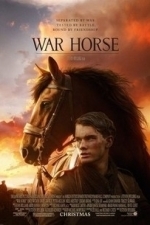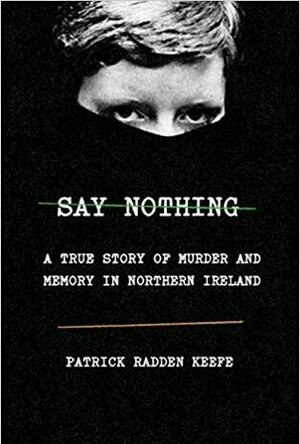
Say Nothing: A True Story of Murder and Memory in Northern Ireland
Book
From award-winning New Yorker staff writer Patrick Radden Keefe, a stunning, intricate narrative...
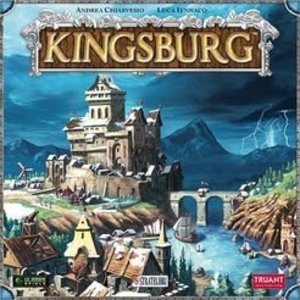
Kingsburg
Tabletop Game
In Kingsburg, players are Lords sent from the King to administer frontier territories. The game...
Boardgames WorkerPlacementGames
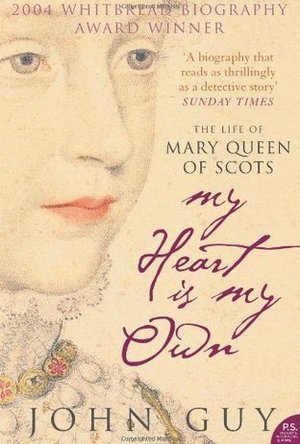
My Heart is My Own: The Life of Mary Queen of Scots
Book
A long-overdue and dramatic reinterpretation of the life of Mary, Queen of Scots by one of the...
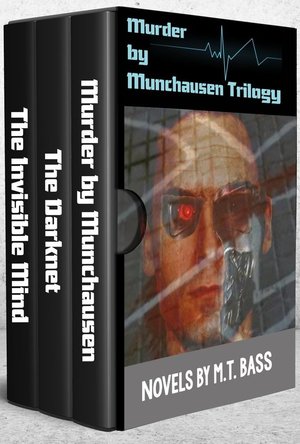
Murder by Munchhausen Trilogy Set
Book
A Cyber Crime Thriller Series: Notorious serial killers digitally resurrected to live & hunt again...
Science Fiction sci-fi scifi sci fi thriller police procedural
Merissa (13600 KP) rated Moon Justice (Aurelia Fridell #2) in Books
Apr 11, 2023
There is a lot that goes on in this book and it will keep your interest as you turn the pages. However, I will say that there were a couple of things that 'niggled' at me once I had finished it. Firstly, the whole 'thing' in Alaska - I'm really hoping that it will lead to a more developed story with Garrett and Mars as I felt that it ended rather abruptly and without actually going anywhere. Then there was the whole 'madman raising an army' situation. It seemed like a lot of hot air about nothing. Now, don't get me wrong. The storyline itself was fast-paced and well-written. It's just that I felt parts of it could have been 'more', bigger somehow. It felt like a big build-up, with a good action scene before and then... poof, it was all over.
Don't get me wrong though, this story isn't rushed and does come to a satisfactory close. On the whole, I thoroughly enjoyed it which is why it gets four stars. I felt the story ended nicely for Ceithin and Aurelia and would love to know more about this family and their friends, hopefully starting with Garrett and Mars as they go to Alaska.
Recommended for fans of the paranormal and shapeshifters.
* A copy of this book was provided to me with no requirements for a review. I voluntarily read this book; the comments here are my honest opinion. *
Merissa
Archaeolibrarian - I Dig Good Books!
August 5, 2016
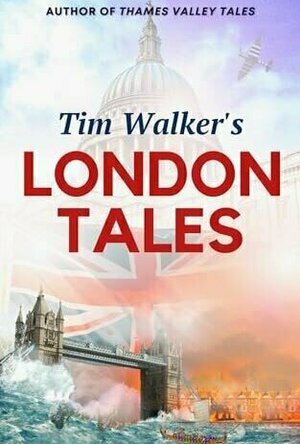
London Tales (Short Stories #2)
Book
This collection of eleven tales offers dramatic pinpricks in the rich tapestry of London’s...
Short Stories Historical Fiction
LeftSideCut (3776 KP) rated Everything Everywhere All At Once (2022) in Movies
May 11, 2022
The narrative is part family drama, and part mind bending sci-fi. The family drama is well crafted and effortless to become invested in. It's gives the characters room to breathe whilst simultaneously wasting little time before shit goes off the rails. When I say mind bending, that's exactly what it sounds like. The sci-fi element is just bonkers. The alternative universes that are shown off are memorable and colourful, and the action set pieces are joyous to behold. There's some solid martial arts on display, and multiple scenarios where you can safely say "well I've never seen that in a film before".
Towering above all of the batshit insane fun however, is the very human centre that EEAAO carries with it. The last 40 minutes or so get unashamedly existential, and accurately convey the feeling of how easy it is to feel like a failure, or to feel alone and unheard in a bustling universe. It's hard hitting but is wholesome as hell (never thought a silent and subtitled conversation between two rocks would hit me in the feels but here we are)
Michelle Yeoh is wonderful and delivers a career best performance. Stephanie Hsu is also great and it's bloody lovely to see Ke Huy Quan back with a vengeance. Jamie Lee Curtis remains easy to love, even as a pain in the arse, pro wrestling tax auditer.
The Daniels have delivered and then some in their follow up effort to the equally weird Swiss Army Man and truly deserve all the praise coming their way.
Everything Everywhere All at Once is a phenomenal experience. I can't imagine anything will beat it for my personal best film of 2022. It's a bonafide, head fucking masterpiece.
ClareR (6054 KP) rated We Germans in Books
Aug 17, 2023
That letter is the book we read, with asides and clarifications from the grandson.
We don’t have a story that covers from the beginning to the end of the war. This is told from when things have started to go wrong for the Germans. The army is fragmented. The soldiers don’t really know where they’re going, but they know that they want to try and make it back to Germany - on foot. These men are scared, confused and the acts they see committed by both sides are horrific.
The grandson helps us to see the effects of the war on his grandfather, and his subsequent imprisonment in Russia. How 70 years post-war have changed him, how the war changed him as well. He acknowledges that he was to blame for what had happened as much as anyone else, but that he was expected to toe the line as a soldier.
This is historical fiction, but its well researched and has the hint of reality about it. It really gives the reader something to think about, and I know that personally, I haven’t found many books out there that cover this period of history in this way. I can’t say as it’s something I want to avidly read lots of books about, but having read this from a more human perspective (rather than a factual history book that lists dates and places), it feels very personal.
This is a short, powerful novel, and I think it’s worth the time spent reading it if you have an interest in either the time in history, or human nature.
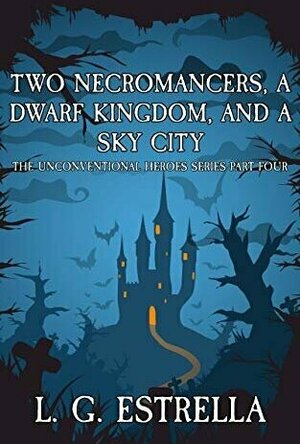
Two Necromancers, a Dwarf Kingdom, and a Sky City (The Unconventional Heroes #4)
Book
Two necromancers, a dwarf kingdom, and a sky city – it sounds like a prelude to mayhem, and given...
Movie Metropolis (309 KP) rated War Horse (2011) in Movies
Jun 11, 2019
However, here, the ‘king’ relaxes a little and delves into proper old fashioned story telling with the emotional rollercoaster that is War Horse. Teaming up with John Williams once again, the duo delivers a beautiful score to accompany a beautifully shot film.
Jeremy Irvine stars alongside a full roster of celebrities including Harry Potter’s David Thewlis and Thor’s Tom Hiddlestone in what can only be described as one of Spielberg’s greatest films.
The film opens with some awe inspiring shots of the Devon countryside, with Albert Narracott (Jeremy Irvine) staring, masterfully at two horses in a field. Fast forward a few years and his alcoholic father Ted, played wonderfully by Peter Mullen purchases one of them in an auction, hoping to turn it into a plough horse. This horse becomes the focus of the entire film and is nicknamed Joey by Irvine’s character.
After the usual, Spielberg sentimentality, Joey is summoned to help the English army in the First World War. Obviously, this doesn’t go down too well with Albert and he promises that one day, they will find each other. It’s hard to describe just how heart-breaking these scenes are, as Joey is led away by his new trainer (Tom Hiddlestone) and all Albert can do is watch.
After being defeated by the Germans in a deadly ambush, Albert is informed that Hiddlestone’s character, Captain Nicholls has been killed in battle. Assuming the worst, Albert starts to prepare to either reunite with his beloved steed, or discover whether or not he has perished.
Spielberg has created a shockingly beautiful film as Joey loses Captain Nicholls and roams the countryside unmanned trying to escape the clutches of the German army. Unfortunately, on occasion, he runs right into them and becomes an artillery horse, pulling canons and other weapons.
The shots of no-man’s land as the horse time and time again escapes are breath-taking and show the scale of the destruction like nothing I’ve ever seen. Spielberg has a knack for scale and in War Horse, this is exceptionally poignant; shots of a horse graveyard and the grey barren landscape are examples of fine film-making. To say you’ll be in tears is somewhat of an understatement as Joey, terrified from the ordeal he is being taken through loses comrades, crashes through barbed wire and nearly gives up on life.
This coupled with John Williams best score since Jurassic Park ensures that this is a subtle blockbuster to be enjoyed by all.
However, the film isn’t perfect. On occasion, it delves into unnecessary sentimentality and Spielberg must’ve had a book of movie clichés with him at some points during the shoot, like the cheesy sunset ending and the token pulling through in the face of adversity. These are, however, small points in a film which is a spectacle to behold.
The animals no doubt steal the show, but their human counterparts do well in their roles. Jeremy Irvine is fabulous and was an unusual but totally justified choice for the part. David Thewlis shows how versatile he really is as an actor, playing the heartless landlord, ready to ship the Narracott family out of their farm.
War Horse is a film which hits with a huge dose of emotion. John Williams and Steven Spielberg are an unstoppable combination and what the film does best is show off its directors prowess as an artist, not a film-maker. The special effects are sparse because the story doesn’t require them, but when they are there, such as in the battle scenes, they help the story along, instead of hindering it.
It may not quite match the dizzy heights of Schindler’s List and Jurassic Park as Spielberg’s best, but it fits in between excellent Spielberg and spectacular Spielberg. Take some tissues and prepare yourself and you’ll be all set.
https://moviemetropolis.net/2012/01/22/review-war-horse-2012/
